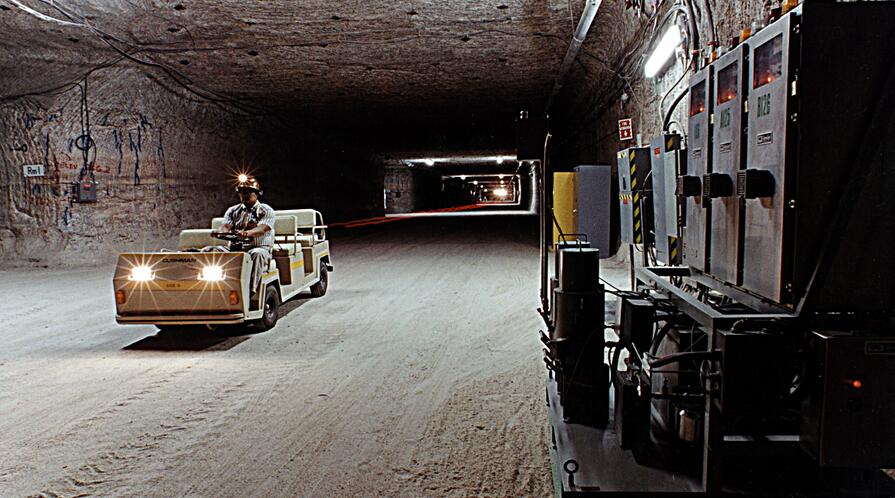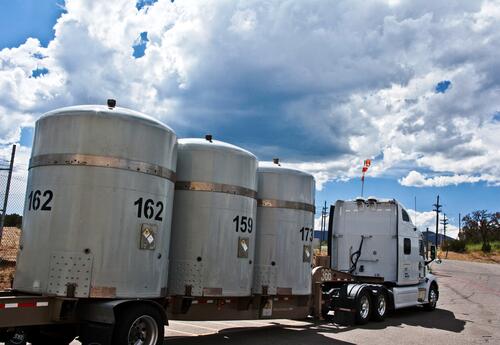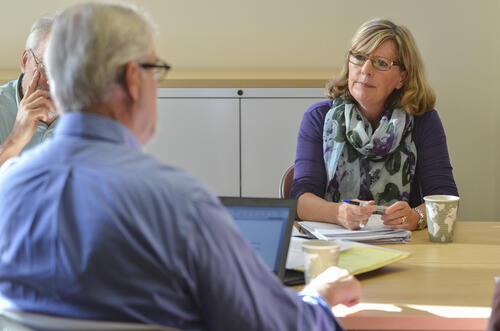Where Should America Store its Nuclear Waste?
Where Should America Store its Nuclear Waste?

Plans to dispose of radioactive waste in a deep geologic repository have been stalled for the last five years, so the U.S. Department of Energy is now trying to develop a strategy for the siting of nuclear facilities, such as for interim storage and final geologic disposal.
Key to DOE’s strategy is “consent-based siting,” an approach which aims to minimize the political controversy from local communities and the state.
But how would such a process work in practice? And can the diverse range of stakeholders involved realistically be expected to reach a consensus on such a controversial issue?
Critical questions like these were the main focus of the third Reset of U.S. Nuclear Waste Management Strategy and Policy Series meeting held at Stanford last week.
Scientific experts, government officials and stakeholders at the state, tribal, national and international levels were all invited to discuss strategies to move forward a program that is now in stalemate as the growing inventories of spent nuclear fuel from commercial power plants and high-level defense waste continues to accumulate at sites across the country. Moving forward with the concept that communities and states have a say in the process requires considerable input from the concerned and affected parties, many of whom were represented at this meeting.
The Gordian Knot: Nuclear Waste Management in the United States
In 2008, the Department of Energy submitted a license application for a proposed repository at Yucca Mountain in Nevada. Politics, changes in legislation, lawsuits and ultimately a lack of public trust were among many reasons that plans for the Yucca Mountain repository were not realized. In the absence of a way forward, spent nuclear fuel from nuclear power reactors remains stranded at over 70 sites around the country.
And in another recent blow to America’s nuclear waste storage program, the government’s only deep geological repository for high-level transuranic nuclear (TRU) military waste stopped receiving waste two years ago. A release of radioactivity due to unanticipated chemical reactions in a drum of waste lead to the temporary closure of the Waste Isolation Pilot Plant (WIPP) in Carlsbad, New Mexico after 15 years of operation.
A Question of Consent
Last March, President Obama directed the DOE to start planning for the development of a defense-only repository for high-level nuclear waste. At the same time, the DOE announced that it would proceed in parallel to address storage and disposal of spent nuclear fuel from commercial nuclear power plants around the country.
 A shipment of transuranic waste from the defense industry heads for long-term storage at the Waste Isolation Pilot Plant in this photo from 2012.
A shipment of transuranic waste from the defense industry heads for long-term storage at the Waste Isolation Pilot Plant in this photo from 2012.
Kotek served as staff director to the Blue Ribbon Commission on America’s Nuclear Future from 2010–2012, which recommended the consent-based strategy for locating nuclear waste facilities, such as a geologic repository. He acknowledged that previous top-down approaches haven’t worked and said the DOE is now seeking public input on how to design a consent-based siting approach by which communities are recognized as partners in the management and disposal of the waste.
“We aim to implement such a system incrementally, to ensure safe and secure operations, to build and maintain public trust and confidence, and to adapt our approach based on lessons learned,” Kotek said.
“As a first step, we will work collaboratively with the public, with interested communities, and with Congress to begin identifying potential partners in this effort.”
The Allocation of Power
States, tribes and local communities all want to have a major say over federal decisions concerning waste repositories, and they want the clear-cut ability to say “no” or “yes” to repositories or nuclear facilities in their jurisdiction.
John Heaton with the Carlsbad Department of Development in New Mexico said he believed the scientific work at Sandia National Laboratories was key to the community’s initial consent to build the Waste Isolation Pilot Plant (WIPP) in their region, and their willingness to reopen the plant in the near future.
“We already had independent monitoring in place at WIPP, and we are expecting to reopen by the end of the year with better safety measures,” said Heaton.
In contrast, for decades, the Shoshone Bannock Tribe in Idaho never made any agreements with the DOE on radioactive waste shipments traveling through their land. Instead, the DOE worked directly with the state, without dealing with the tribe.
“The state does not speak for the tribes, any more than we speak for the state,” said Talia Martin, DOE program director for the Shoshone Bannock Tribe.
“We’re waiting to hear how the DOE is going to interact with the tribes. Will it be a partnership or will they repeat the past where they negotiated with the state and not with us?”
In Nevada, the state consistently opposed the proposed geological repository at Yucca Mountain, but local communities were generally supportive. Nye County officials in Nevada are concerned that the consent-based siting effort by the DOE will only delay waste disposal progress. Nye County is committed to the resumption of Yucca Mountain licensing hearings.
“I believe an individual, well-informed on the ins and outs of waste repositories are generally of the opinion that Yucca Mountain would be the least expensive and fastest resolution to move the ultimate disposal of nuclear waste and high level defense waste,” said Cash Jaszczak, staff consultant for the Nye County Nuclear Waste Repository Project Office.
Finding a resolution for the different positions of state, tribal and local communities is at the heart of the design of a consent-based process.
An International Perspective
A panel of international speakers from Canada, Finland, France, Sweden and the United Kingdom shared the stories of their own national programs and their successes and failures.
 Kathryn Shaver from Canada's Nuclear Waste Management Organization listens to a speaker during a steering committee meeting for the Reset of U.S. Nuclear Waste Management Strategy and Policy Series.
Kathryn Shaver from Canada's Nuclear Waste Management Organization listens to a speaker during a steering committee meeting for the Reset of U.S. Nuclear Waste Management Strategy and Policy Series.
In Sweden, the industry producing the waste takes full responsibility for its disposal.
“I find it almost exotic that the utilities in the United States, the producers, can pay their way out of responsibility to the state,” said Saida Engstrom, vice president of SKB, the organization that manages Sweden’s nuclear waste.
“One has to find the incentives to have utilities committed to working towards a solution. I think if you produce waste, you should not be given a free pass.”
France and the U.K. are also pursuing public engagement as an integral part of the strategy for their national programs. But it hasn’t always been a smooth process. U.K. Head of Geologic Disposal Bruce Cairns described a consent-based process that failed in obtaining the consent of all involved parties, but he also described a new process that will give it another try.
Hope for a Solution
Rod Ewing, a senior fellow at Stanford’s Center for International Security and Cooperation, said that it is essential to have these extended discussions so that a new strategy has a greater chance of success.
“In another 30 years, the U.S. cannot afford to find itself in the same place that it is now,” said Ewing, who also serves as Frank Stanton professor in nuclear security at Stanford University.
Ewing said it was also important to include students in the conversation, so they understand that they will inherit the problem, and they are part of the future hope to find a safe, trustworthy, consent-based siting solution.
Stanford PhD candidate Katlyn Turner, who’s studying Geological and Environmental Sciences at Stanford, said the nuclear waste issue was just as critical as global warming.
“Regardless of how you feel about it, we have to deal with it,” said Katlyn Turner, a PhD student in Geological and Environmental Sciences at Stanford.
“My generation should frame it as this is waste that needs to be taken care of the same way we need to take care of C02, global warming, coal and other pollutants.”
The Steering Committee will use the input from this meeting, as well as its own extensive experience in waste management issues, to provide advice and recommendations on how the consent-based process might be applied to the U.S. program. It will also make recommendations on other issues such as the question of creating a new, independent waste management organization to oversee the consent-based process.
The Reset meeting was supported by the Precourt Institute for Energy and hosted by Stanford’s Center for International Security and Cooperation.
The next meeting of the Reset series will be In Washington, D.C. in May at George Washington University and will focus on the integration of the waste management system from the production of the waste to its final disposal in a geologic repository.
